India’s first dedicated solar science mission Aditya L1 heads spaceward.
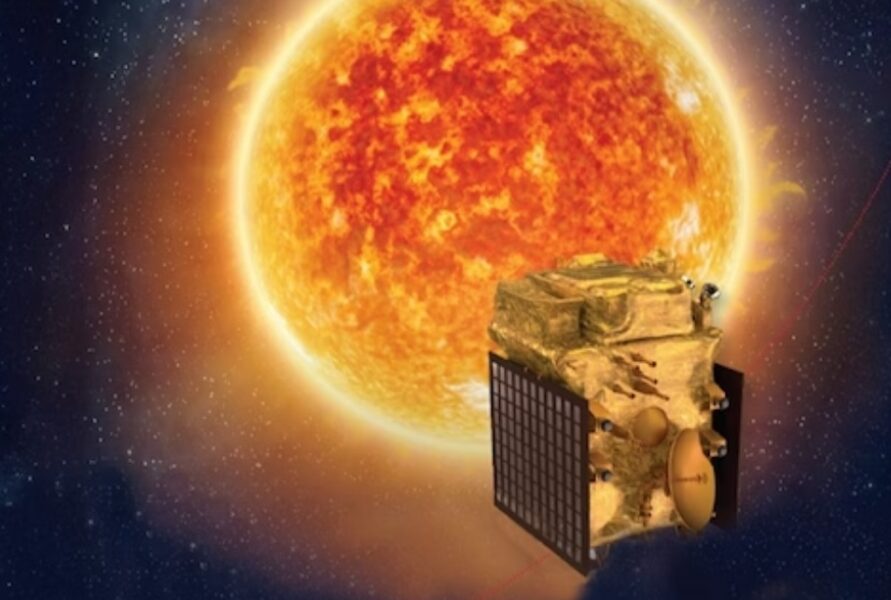
ISRO
The Indian Space Research Organization (ISRO) has been busy in 2023. First came the successful landing of India’s Chandrayaan 3 mission in the lunar south pole region earlier this week. Now, the ISRO has begun its first dedicated mission to study the Sun, Aditya L1.
The launch of a four-stage Polar Satellite Launch Vehicle (PSLV-XL) rocket from the Satish Dhawan Space Center in India with Aditya L1 occurred on Saturday, September 2nd at 2:20 a.m. EDT / 6:20 UT. The mission was initially placed in low-Earth orbit and the deployment was nominal, with spacecraft separation from the upper stage and solar panel deployment occurring around 90 minutes after liftoff. Next, starting on September 3rd, the spacecraft will perform the first of several engine burns to slowly raise its orbit.
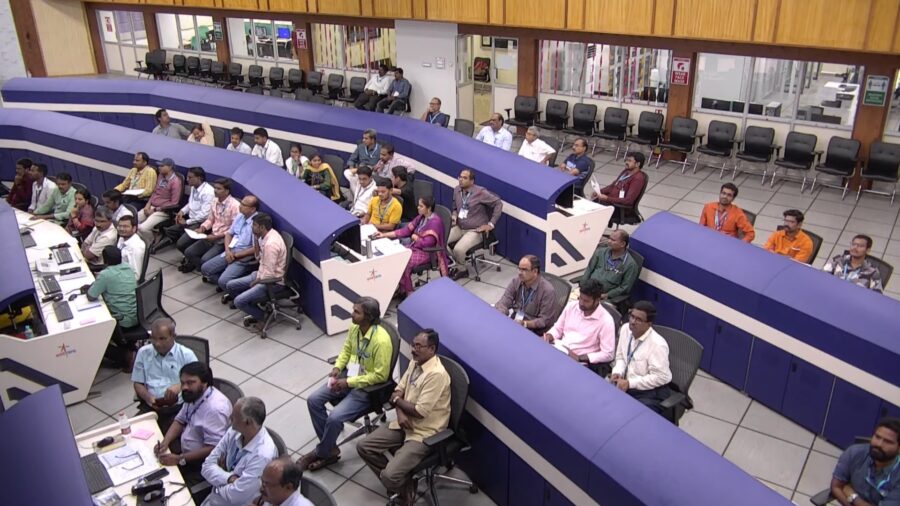
ISRO official webcast
Aditya is the name for the Sun in Sanskrit, and the "L1" in its name refers to the mission’s destination: the Sun-Earth L1 Lagrange point, just under 1.5 million kilometers (1 million miles) sunward of Earth in its orbit. Aditya L1 will take about four months to reach this point. Once there, Aditya L1 will enter a Lissajous or "halo" orbit around this point in space, enjoying a vantage point with a continuous view of our host star.
"A satellite placed in the halo orbit around the L1 point has the major advantage of continuously viewing the Sun without any occultation or eclipses," ISRO officials said in an official statement. "This will provide a greater advantage of observing the solar activities and its effect on space weather in real time."
Other missions at the stable L1 point include the joint NASA/ESA Solar Heliospheric Observatory (SOHO), ESA’s Lisa Pathfinder, and NASA's Advanced Composition Explorer (ACE). Aditya L1 has a nominal mission duration of about five years.
The European Space Agency will provide worldwide tracking coverage for Aditya L1 en route to and at L1, courtesy of the agency's European Space Tracking (ESTRACK) network. Station-keeping around the Lagrange points can prove challenging: In 1998, a failure to perform a routine maneuver nearly doomed the joint NASA/ESA SOHO mission shortly after launch.
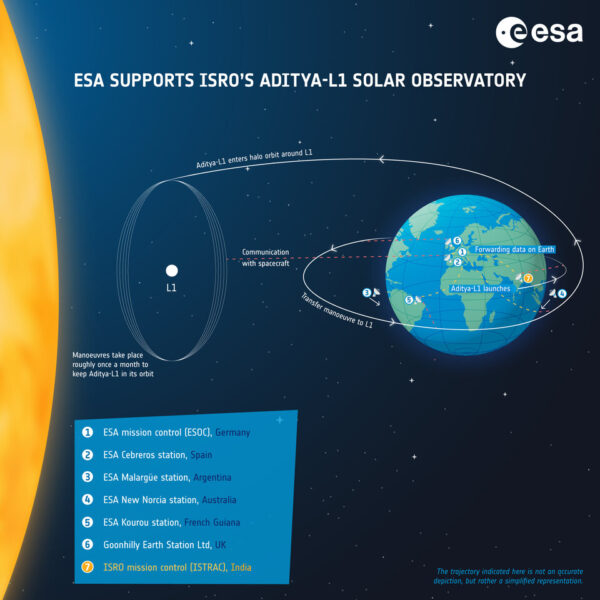
ESA
"With its experience flying and even rescuing missions at the Lagrange points, ESA was in the perfect position to help the ISRO improve their new orbit determination software and demonstrate that it has the fidelity and accuracy that the organization needs in order to operate a spacecraft at a Lagrange point for the first time," says Frank Budnik (ESA Flight Dynamics) in a recent press statement.
The ISRO has also established a Telemetry Command Center in partnership with the island nation of Fiji to monitor Aditya L1 during the crucial ascent phase.
Science Payload
The mission was built by ISRO at the UR Rao Satellite Center in Bengaluru, India. India’s first astrophysics satellite was Aryabhata 1, launched with the help of the Soviet Union in 1975. The 3,300-pound (1,500-kilogram) class observatory carries a suite of seven instruments to study the Sun’s photosphere, chromosphere, and corona. Three of these instruments will also carry out in-situ studies of solar wind particles and magnetic fields at the L1 point. This will provide valuable data on solar dynamics and space weather’s interaction with the interplanetary medium.
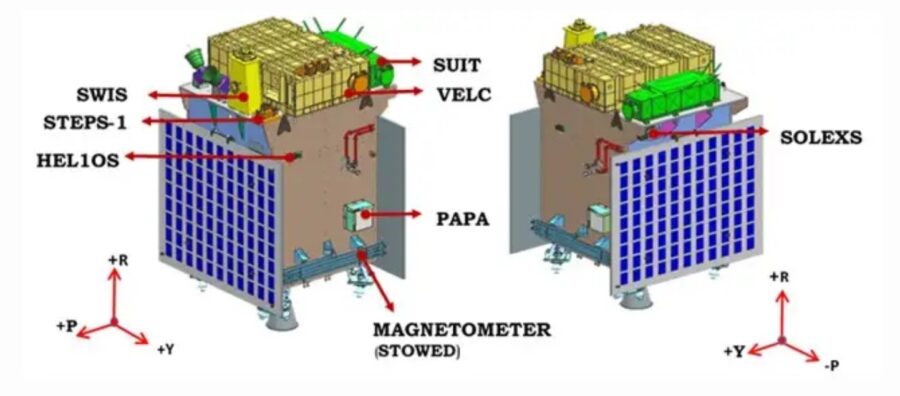
ISRO
Key science objectives for Aditya L1 are to study the origins of coronal mass ejections, monitor and characterize space weather events, and investigate the solar coronal heating mystery, looking at why the outer corona of the Sun is much hotter than the photosphere surface of the Sun below.
To carry this out, Aditya L1 has four remote-sensing payloads, including the Visible Emission Line Coronagaph (VELC), capable of catching CME’s in early stages of formation; low-energy and high-energy spectrometers (SolEXS and HEL1OS); and the solar imaging unit ultraviolet telescope (SUIT).
Aditya L1 will also for the first time spatially resolve the solar disk in the near-UV band.
The in-situ payloads aboard the probe include the Aditya Particle Experiment (ASPEX), the Plasma Analyser Package (PAPA), and the Advanced Tri-axial High Resolution Digital Magnetometer. These will gather data on incoming space weather, measuring speed, energy and magnetic field direction.
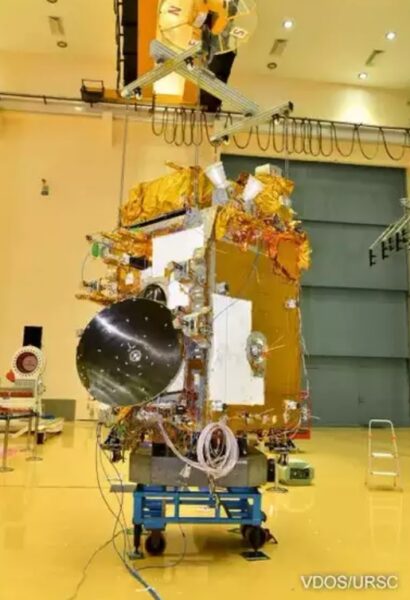
ISRO / VDOS / URSC
Also, watch for India to launch its X-ray Polarimeter Satellite (XPoSat), the ISRO's first dedicated polarimetry mission to study X-ray sources, possibly as early as late this year.
Aditya L1 couldn’t be headed to space at a better time, as our host star heads towards its 11-year solar maximum in 2025. Aditya L1 joins the Parker Solar Probe, ESA’s Solar Observer (SolO), NASA’s Solar Dynamics Observatory, and the venerable SOHO mission as a key part of humanity’s efforts to unlock the secrets of our often tempestuous host star.
 2
2
Comments
Yaron Sheffer
September 5, 2023 at 7:24 am
Congrats to ISRO!
PS. The upcoming XPoSat mission will not study cosmic rays, but the polarization of X-ray photons from various point sources.
You must be logged in to post a comment.
David DickinsonPost Author
September 5, 2023 at 1:34 pm
Thanks... fix'd.
You must be logged in to post a comment.
You must be logged in to post a comment.